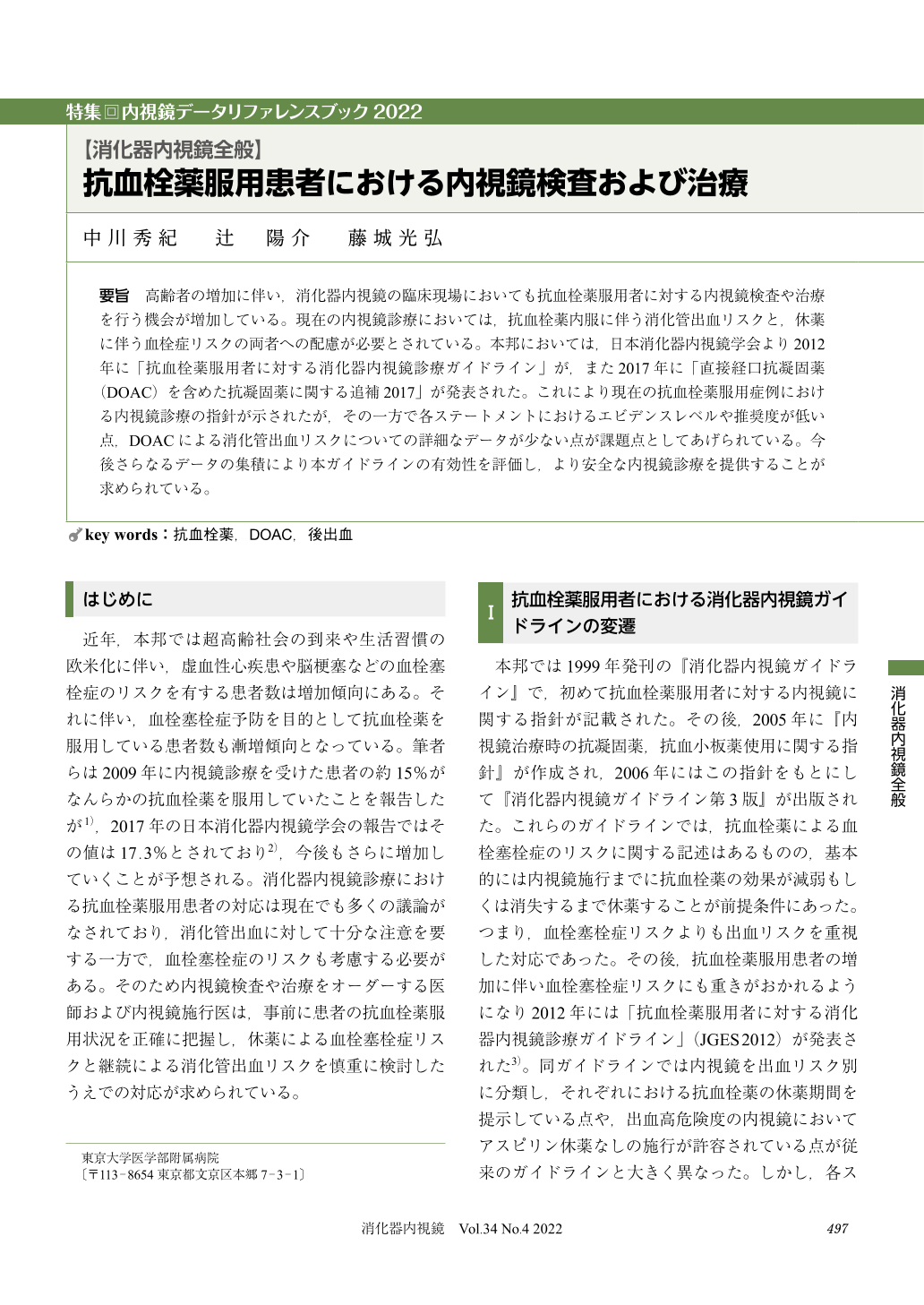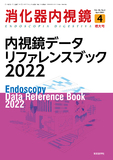Japanese
English
- 有料閲覧
- Abstract 文献概要
- 1ページ目 Look Inside
- 参考文献 Reference
要旨 高齢者の増加に伴い,消化器内視鏡の臨床現場においても抗血栓薬服用者に対する内視鏡検査や治療を行う機会が増加している。現在の内視鏡診療においては,抗血栓薬内服に伴う消化管出血リスクと,休薬に伴う血栓症リスクの両者への配慮が必要とされている。本邦においては,日本消化器内視鏡学会より2012年に「抗血栓薬服用者に対する消化器内視鏡診療ガイドライン」が,また2017年に「直接経口抗凝固薬(DOAC)を含めた抗凝固薬に関する追補2017」が発表された。これにより現在の抗血栓薬服用症例における内視鏡診療の指針が示されたが,その一方で各ステートメントにおけるエビデンスレベルや推奨度が低い点,DOACによる消化管出血リスクについての詳細なデータが少ない点が課題点としてあげられている。今後さらなるデータの集積により本ガイドラインの有効性を評価し,より安全な内視鏡診療を提供することが求められている。
With the increase in the number of elderly patients, there are more opportunities to perform endoscopic procedures for patients taking antithrombotic agents. We now need to consider both the risk of bleeding and thrombosis in performing endoscopy. The Japanese Society of Gastrointestinal Endoscopy published the “Guidelines for Gastrointestinal Endoscopy in Patients Undergoing Antithrombotic Drugs” in 2012 and the “Guidelines for Gastrointestinal Endoscopy in Patients Undergoing Antithrombotic Treatment: 2017 Appendix on Anticoagulants Including Direct Oral Anticoagulants” in 2017. However, these guidelines have problems in that the level of evidence and recommendations for each statement is low and the data on the risk of bleeding associated with DOACs are lacking. Therefore, we need to accumulate more data and evaluate the validity of this guideline and to provide safer endoscopic treatment.

© tokyo-igakusha.co.jp. All right reserved.


